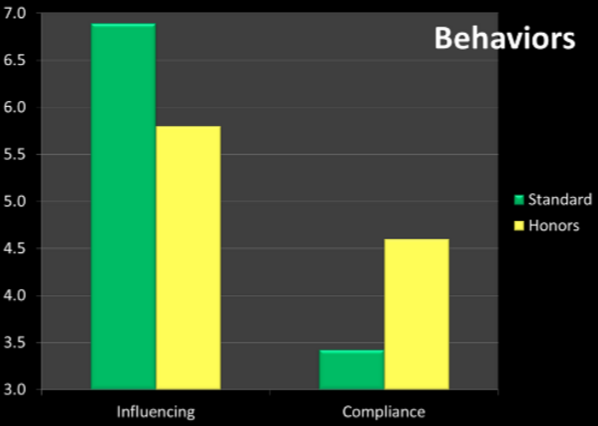New Motivator Research: Aesthetics Matter for High School Students
March 14th 2015, Written by Marie Campbell
Indigo recently administered the Indigo Assessment to students at two high schools, one a suburban charter school and the other an inner-city charter school in Denver. While these controlled groups cannot be considered indicative of all high schools across the nation—at least until further research is performed—initial findings reveal unusually high levels of the Aesthetic motivator among the two student bodies.
The Indigo Assessment measures motivators as described in the work of Drs. Eduard Spranger and Gordon Allport in their study of human value, motivation, and drive. In short, motivators describe why people do things: the internal desires that drive behavior. For example, the Aesthetic motivator indicates a desire for harmony and beauty, whereas the Theoretical motivator describes those who learn for the sake of knowledge. Other motivators include Utilitarian (those motivated by tangible results and productivity), Social (desire to help others), Individualistic (power, leadership, self-advancement), and Traditional (motivated by beliefs or value systems).
According to Indigo’s initial findings, both schools rank unusually high in Aesthetic compared to the national mean. See the results from one school below. (Difference between high schoolers and adults reaches almost two full standard deviations.)
While these findings are, as yet, too limited to warrant sweeping assertions, one possible conclusion is that high school students respond to aesthetics more strongly than adults. If this is the case, courses in music, the arts, and environmental awareness become integral for student success.
Indigo has already seen positive results from this data, proving that simple interventions based on motivational clues can result in rapid student progress. For example, one sophomore earning a failing grade in math ranked unusually high in the Aesthetic motivator. Noting her passion for aesthetics, a guidance counselor asked how the class environment might be affecting her ability to learn. She quickly blurted out that the room was a disaster; as soon as she entered the classroom, she couldn’t think. The guidance counselor asked the teacher to clean up the room, and immediately this young woman’s grades went up.
Results like this reveal just how important it is for educators to understand what truly motivates students—those internal desires that drive students to learn. Indigo looks forward to expanding research in this area.

